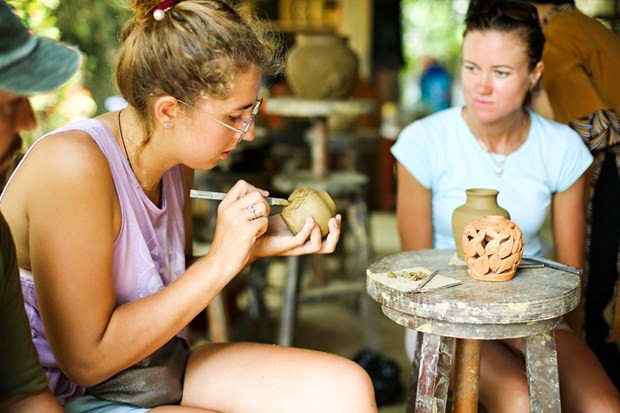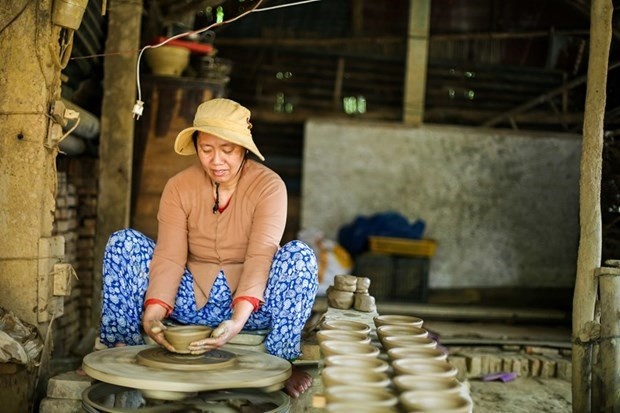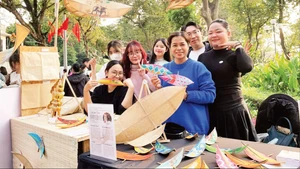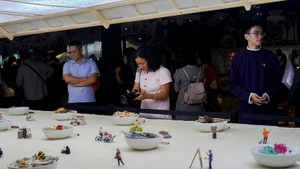Located on the banks of Thu Bon river, about 3km from Hoi An Ancient Town, the Thanh Ha ancient pottery village has been developed for more than 500 years. It is famous nationwide for its traditional craft of making pottery and its delicate pottery products.
The Thanh Ha traditional pottery trade was listed as the National Intangible Culture Heritage by the Ministry of Culture, Sports and Tourism in 2019.
Legend has it that in the beginning of the 16th century, artisans from the north central province of Thanh Hoa settled in Hoi An and established the village. They did their traditional craft and handed it down through the generations.
During the 17th -18th centuries, the craft flourished, providing pottery products to central provinces. At that time, the village’s products were also exported to Japan, China and Spain via the Hoi An trading port.
Skilled artisans of the village also contributed to shaping number of royal architecture works, mausoleums, and residences of kings and mandarins of the Nguyen Dynasty in Thua Thien - Hue.
When heating the pottery, Thanh Ha potters do not use thermometers to measure the temperature, but only base on their experience. To give the pottery different colours, such as red gold, red brick, brown, pink and black, instead of using enamels, the local potters only use techniques to mix the soil and use a suitable temperature when firing.
Potters use clay along the Thu Bon river to make pottery. To produce a beautiful and durable pottery product, it takes a long process and requires meticulousness.
The product shaping process requires two people. One person stands on the ground with one leg and uses the other foot to kick the rotary turntable, whilst the other person uses two hands to knead the clay into desired shapes.
After being shaped, pottery products are taken out to the sun, then baked in traditional wood stoves. Although this is the last stage, it is extremely important, requiring right heat and time to be able to create the best products.
The main products of the Thanh Ha pottery village are utensils for daily life such as cups, bowls, jars, jars, vases, and ornamental pots with various designs and colours, especially these products are lighter than similar products of other localities.
 |
| The village is now an attractive destination to foreign tourists (Photo: VNA) |
To meet the increasing demand of the market, Thanh Ha villagers now make diverse products of high artistic value, such as statues and decorative products. Not only for domestic consumption, many products of the village have been exported to Japan, Germany, the UK, France, and the US.
Visiting the village, tourists will have a chance to witness the skills of local artisans and make pottery products themselves.
The most special highlight in the Thanh Ha pottery village is the display area of world wonder-shaped pottery products such as the Sydney Opera House, the Taj Mahal of India, the Colosseum of Italy and famous architectural works and monuments of Vietnam such as Notre Dame Cathedral, the Temple of Literature, and President Ho Chi Minh's Mausoleum.
The Thanh Ha pottery village is said to be an ideal destination for tourists who love to explore traditional trades or want to find out the artistic from within their own soul.
















